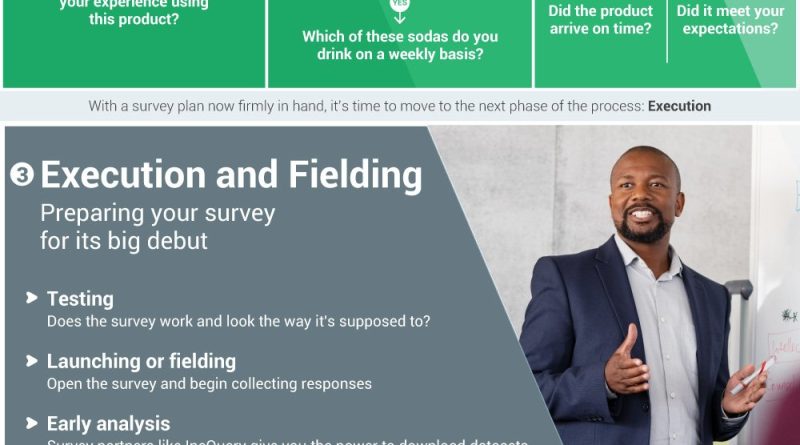Building a Quality Survey for Your Business Decisions – GrowMap
Business decisions are usually based on the use of cold, hard data. Without data, these decisions will be made of mere fluff, while lacking the support, stability, and reliability to make the correct call.
The best way to collect data from the right sources is surveys, where the target audience for a decision can share their thoughts and produce quantifiable evidence for a business’ needs.
A high quality survey needs to be carefully planned out, in order to extract the best possible insights to further a business’ needs.
How to Conduct a Survey
There are four main components of designing a quantitative survey. The first stage is to plan and scope out the defining questions that the survey is meant to answer- in other words, the main end goal of the survey.
Then, the survey will need to be authored in a way that presents a clear path for survey respondents to make.
This includes programming the survey and designing questions that build upon each other.
Then comes the execution and fielding of the survey, by distributing it out to willing participants.
Finally comes the analysis and reporting of the results in a digestible way.
Planning and Scoping Stage: “the Five Ws”
In the first planning and scoping stage, there are five main questions that the survey must be designed to answer, classified under the umbrella term “the five Ws”.
-
- WHY is the research objective of the survey, and is the overall core information that the business is trying to uncover.
- WHAT defines what questions need to be asked, and this can be done by creating a survey outline.
- WHO helps the business determine a respondent profile.
- WHEN is all about creating a survey timeline that details when the survey should launch and close.
- Finally, WHERE refers to where people could take the survey, including the formatting for computers and mobile devices.
In the second stage of the survey creation process, the survey will need to be authored by creating an outline and writing great questions that will drive optimal survey results.
How to Craft Great Survey Questions
These questions will need to be both understandable and objective. It is important to stray from asking leading questions that are designed to influence the participant’s answer.
Loaded questions are also to be avoided, so that it is not assumed what a participant’s stance will be.
For example, instead of asking how often a participant drinks certain brands of soda, it would be better to lead with asking if the participant drinks soda, and if they answer yes, then asking which brands they drink on a daily basis.
Double-barrel questions are also to be avoided. This is when two questions are asked at once, which can be confusing for a participant.
Executing a Survey
Once the survey’s questions are written, the next step is to prepare it for the execution stage.
First it must be tested to ensure that the survey works and looks the way that it’s supposed to.
Next the survey must be launched and responses will begin to be collected.
Once a reasonable amount of responses have been received, as determined by any quotas, this raw data can be converted to actionable information.
It can be exported to Excel or other analysis tools that can help convert the data into a more digestible form.
The overall goal of releasing a survey is to collect data that help drive a future business decision.
It is important to transform this data into a cleaner, more visual representation so that the main insights can be communicated easier.
Line, bar, and pie charts are all common methods of visualizing data. Line charts are helpful for tracking a value over time.
Bar charts help compare specific values. Pie charts help to break down a whole into separate components, which can help determine specific demographics to focus a business’ efforts on.
In Conclusion
Surveys are a critical part of a business’ ability to connect with their consumers and target market.
Releasing one takes a lot of preparation and planning from start to finish. It is very important to ask the right questions that target exactly what the company is trying to determine.
However, the payoff for all this preparation is steep- businesses can ultimately create visual representations of their insights and drive better strategies for their company moving forward.
